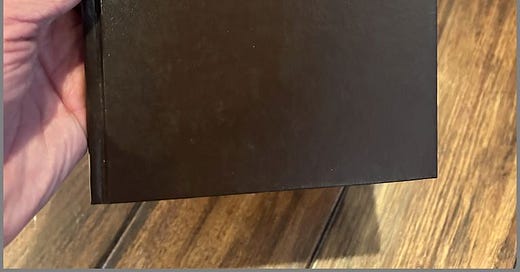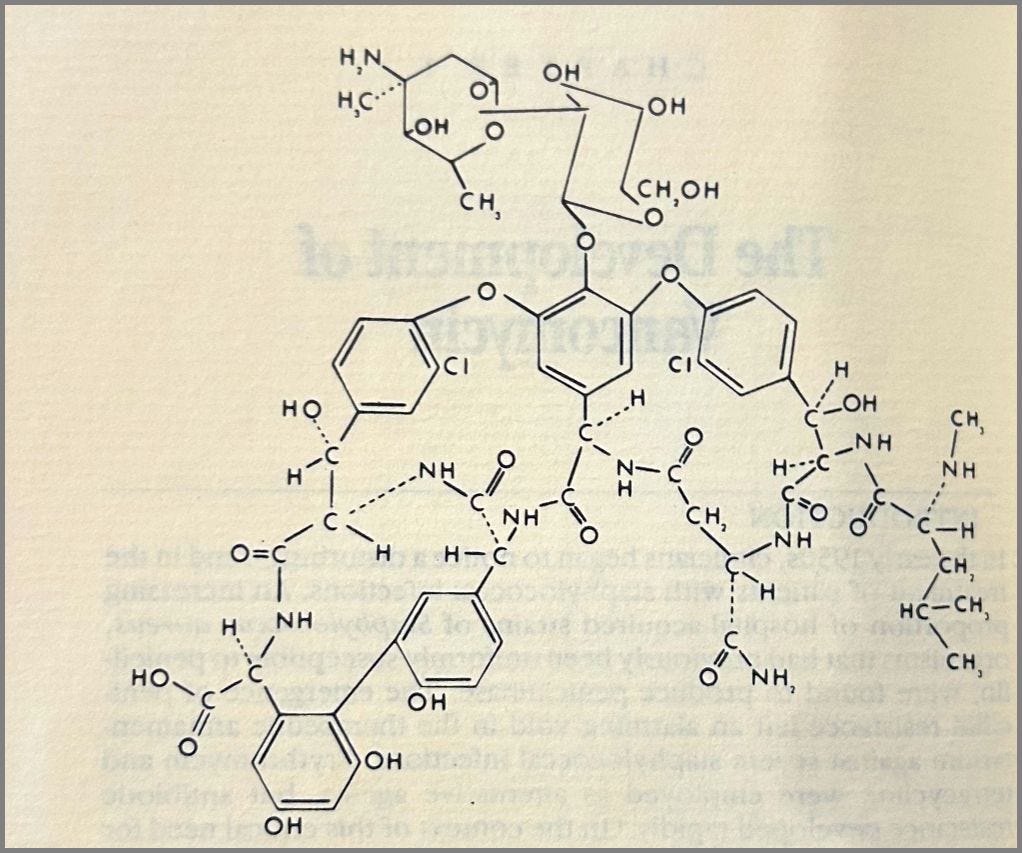Merry Carbon Chains
Call me a nerd but this was a book I asked my wife to give me for Christmas. It seemed important in my understanding of the world but until I read it I really had no idea. Thanks for securing your safety belt for this ride.
As I told my old friend and reader JL it reads like a Michael Crichton novel:
In the 1950s, bacteria were exuding a counteractive substance to penicillin which defeated it, pretty much unravelling medical advances from WW2
Eli Lilly dispatched people to (presumably) all corners of the world to look for a solution
A substance was found in Borneo. In the dirt. Yes, dirt.
It slayed the “difficult” bacterial infections in people.
Vancomycin was distilled, “vanco” named from the intent to vanquish
Methicillin came on the scene and gained prominence in bacterial warfighting and vanco was sidelined
The massive strength of numbers in bacterial reproduction (you and I cannot even grasp it) resulted in the weak stuff getting wiped out while MRSA (methicillin resistant Staphylococcus aureus) triumphed to cause havoc
Methicillin was kicked in the teeth (chemically speaking)
Vancomycin rides back in on an armored horse with a sword of steel, not bronze
It is a 66 carbon chain containing benzene rings. Fuels we are associated with are around 10 for lighter fluid and 20 for wax.
The method of action is to impede Phase 2 of cell wall construction of bacteria. To make some sense of this, a virus is the program and a bacterium is the Tesla. Got no wheels? Your program doesn’t matter as you got no ride.
To recap, the people at Eli Lilly assumed that something good in the world counteracted something bad. That we are in a static balance reinforces this presumption.




